Copyright © 2025 Motivate Media Group. All rights reserved.
UAE-based architect Sara Bokr designs with a ‘feminine approach’ while exploring the intersections between architecture and other disciplines
Bokr shares her approach with designing chairs that can be used by nursing mothers
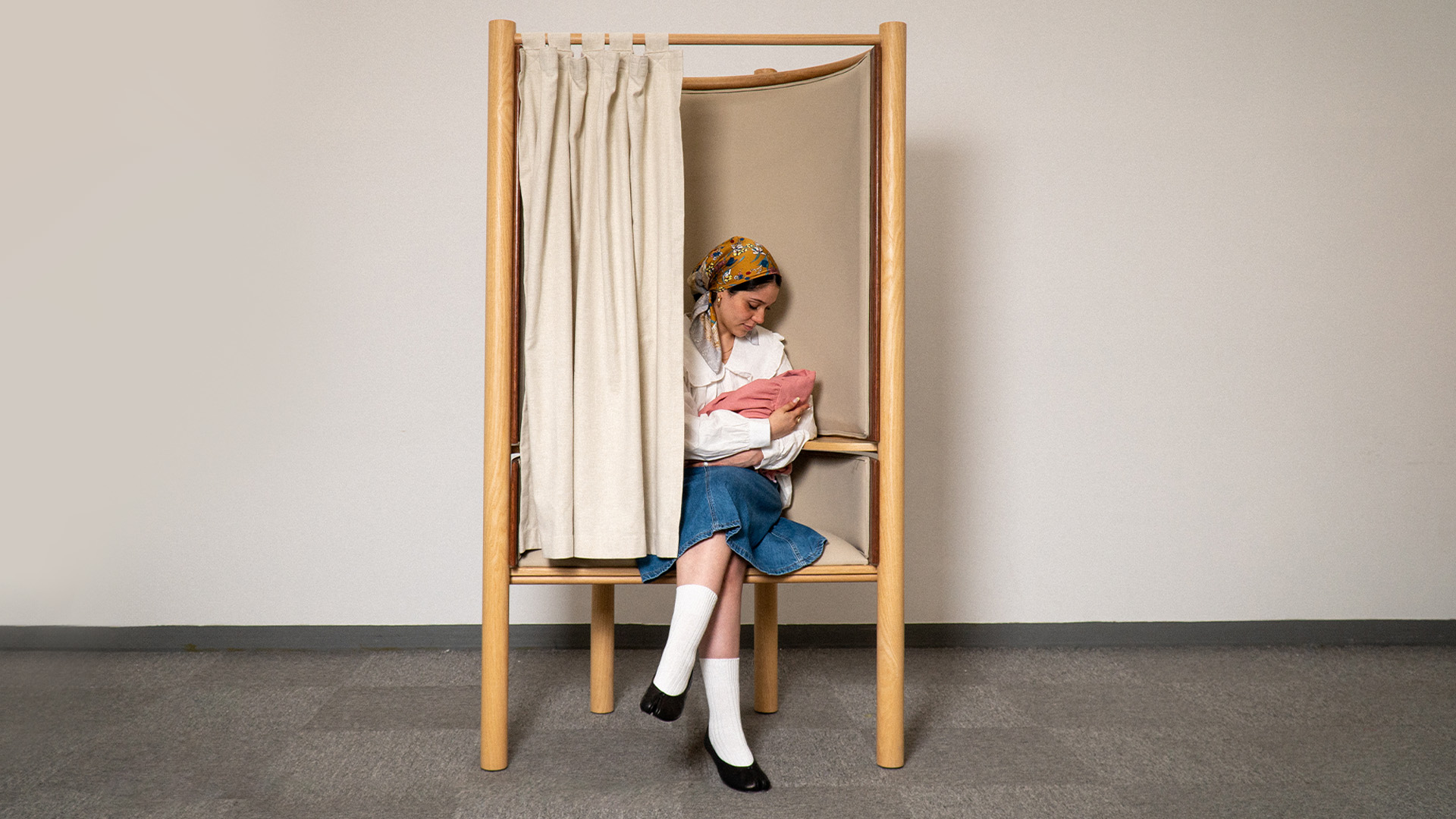
When I think of vernacular architecture, I usually think of how a lot of women were the home-builders and shapers of their nomadic lifestyle,” begins Palestinian architect Sara Bokr. “Their spaces were fluid, created using natural elements collected from the surrounding area, and were usually round or oval in shape. These simple principles were always what I built on during my practice. I tend to work with a feminine approach in design because it is most relevant to how I think and who I am. It emphasises organic and ergonomic design, human-centred spaces, and a holistic understanding of the built environment – which leads me to a more inclusive and empathetic way of thinking.”
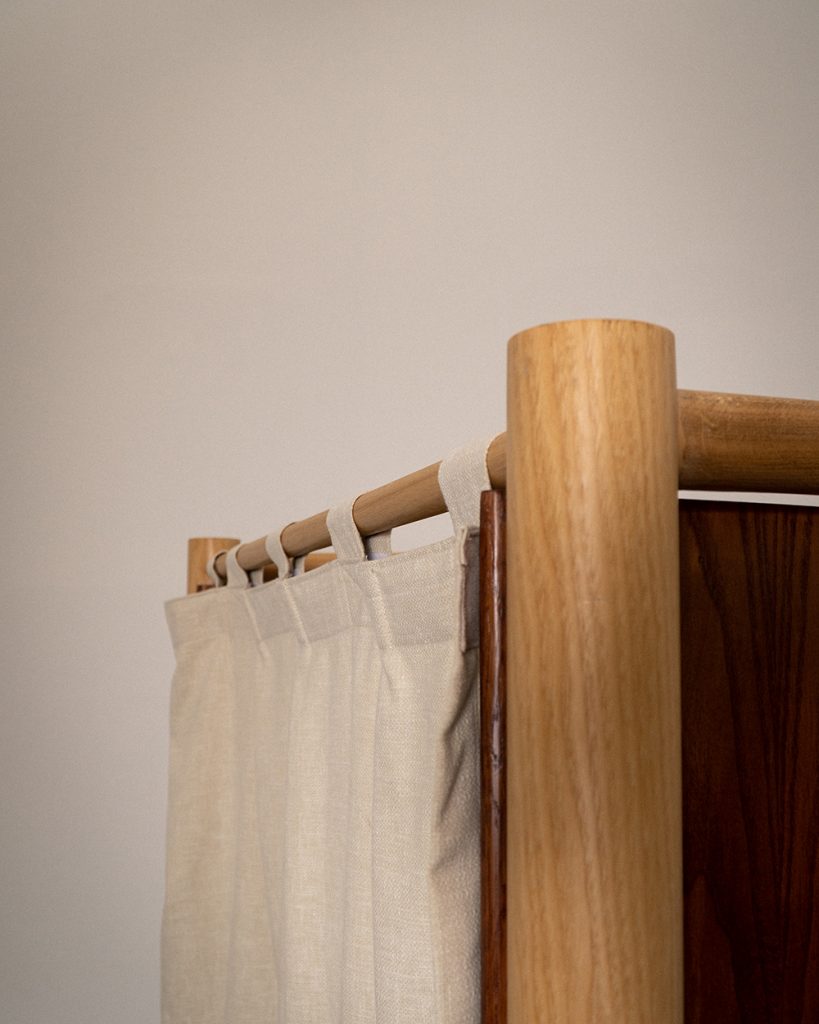
Omooma (which translates to ‘motherhood’ in Arabic) is a fitting example of this approach, comprising a chair that can be used by nursing mothers in public spaces, offering them a sense of privacy without disrupting their daily activities. Bokr explains that many of the mothers in her circle who breastfeed in public are often faced with discomfort and a sense of shame, causing them to resort to isolated spaces such as bathrooms or cars. “This disruption not only affects their freedom but also deprives them of the opportunity to seamlessly integrate breastfeeding into their daily lives. I wanted Omooma to be a chair that acts as a space within a space and can provide a tranquil and cosy environment amidst bustling public spaces like offices, libraries and centres [so] mothers [need not] sacrifice their convenience or compromise their daily routines,” Bokr explains.
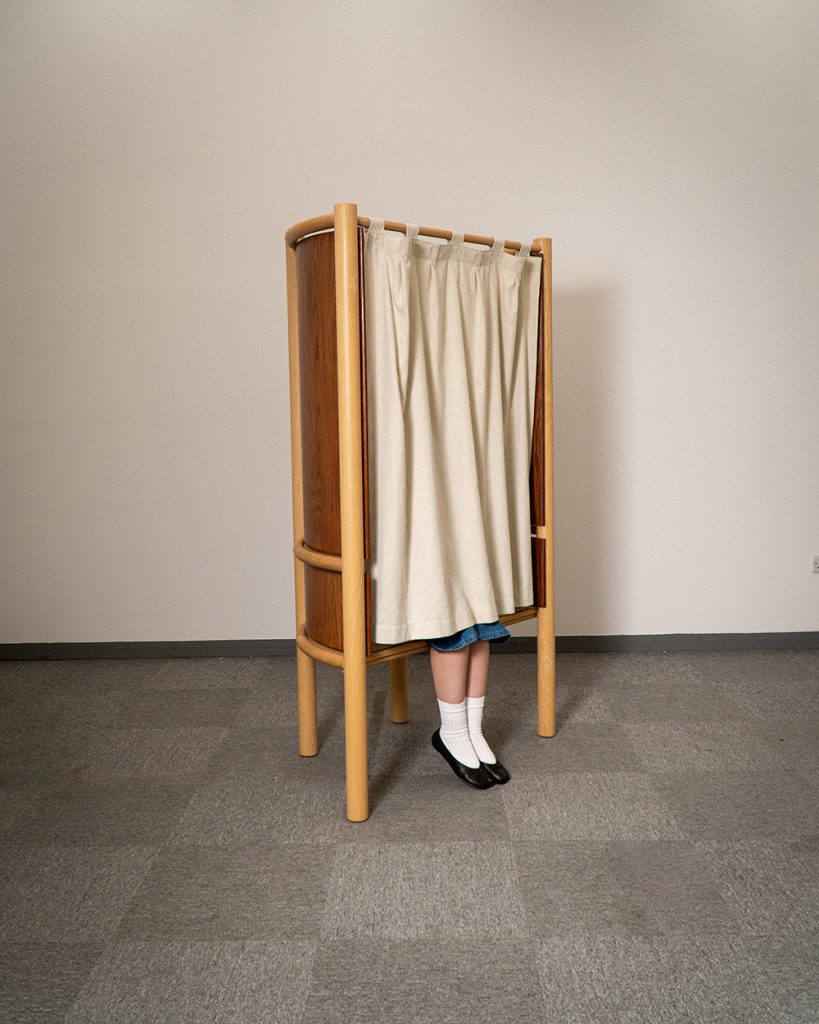
Made using tinted oak wood, the body of the chair is cocooned within a curved backrest that is cushioned with camel leather to “soothe the space”, while the forefront of the chair features a curtain made from lightweight, breathable linen, which acts as a partition and provides a sense of privacy. Inside, you can find armrests to support the mother while she nurses, as well as space underneath to store bags. Bokr views the simple chair as the most ideal starting point to designing a space. “When I was in architecture school, everyone used to say how an architect needs to design at least one chair in their lifetime to really understand it all,” she remembers. “Starting my exploration with a chair has unveiled the potential of space in a unique and intimate manner that one does not come across in designing large-scale architecture. It is a direct interface between the human body and the built environment, offering a point of connection and interaction.
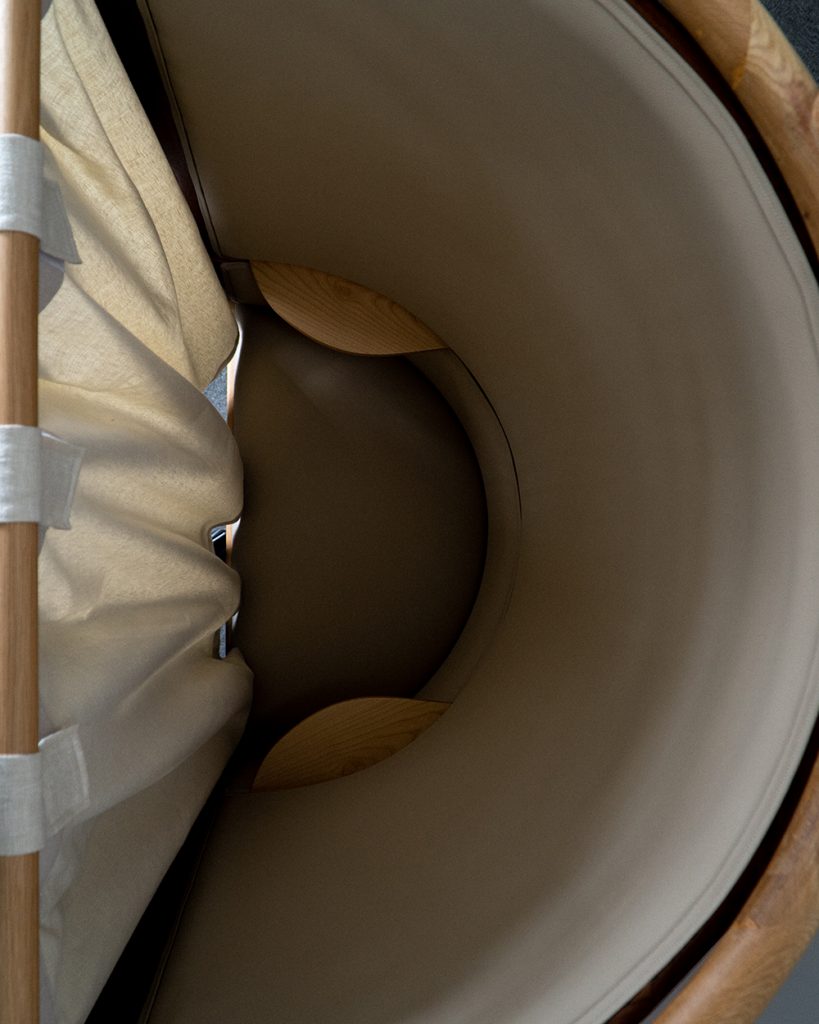
“When I begin contemplating the chair, I engage in a process of understanding human needs and behaviours,” she continues. “This leads me to observe how people interact with it; their postures, movements and the relationships they form within the space. From this starting point, the chair’s relationship to its immediate surroundings begins to play into larger environments, such as rooms, buildings and even urban landscapes. By exploring these spaces, I can envision how the arrangement of furniture and architectural elements within a room can create zones and patterns and allow for meaningful human connections. By drawing inspiration from a chair’s qualities, we can create a cohesive and harmonious design language that resonates across various scales, unifying the spatial experience.”
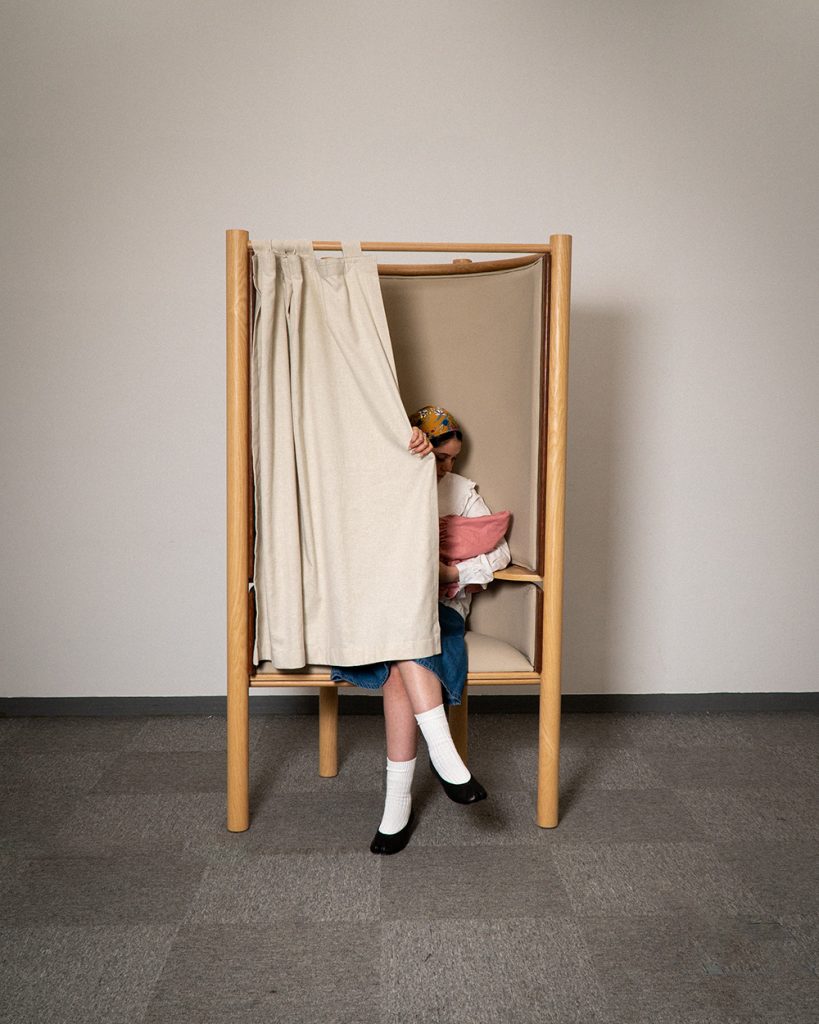
Bokr is currently working on a few interior design projects, including F&B spaces as well as a graphic design office. She is also collaborating on furniture designs with friends and exploring the intersections between music and architecture. “I dream of exploring spaces that not only serve functional needs but also evoke emotions, foster connections and enrich the lives of those who inhabit them. I want to introduce architecture within other creative fields like fashion, music, photography and film-making,” says Bokr.
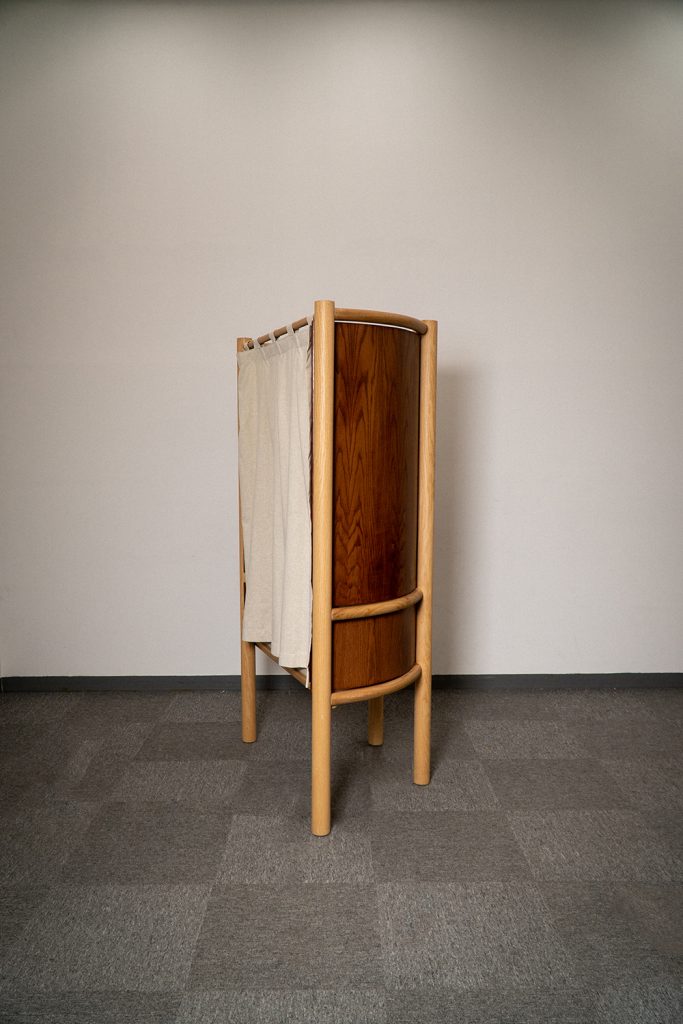
Her first step towards this was an event she curated last month titled ‘Grazing Dinner with Architecture’ at Satellite Gallery in Al Quoz: a one-day event that brought together creatives across various fields. “For the longest time, I have felt that there has been a gap between architecture and the creative scene in the UAE,” Bokr explains. “This was a way to discuss and introduce architecture and architects to other creatives around me and to hopefully start integrating architecture within our projects, our thinking and our way of living. I am hopeful that this can become an annual event that brings out all sorts of creative thinking within architecture.”
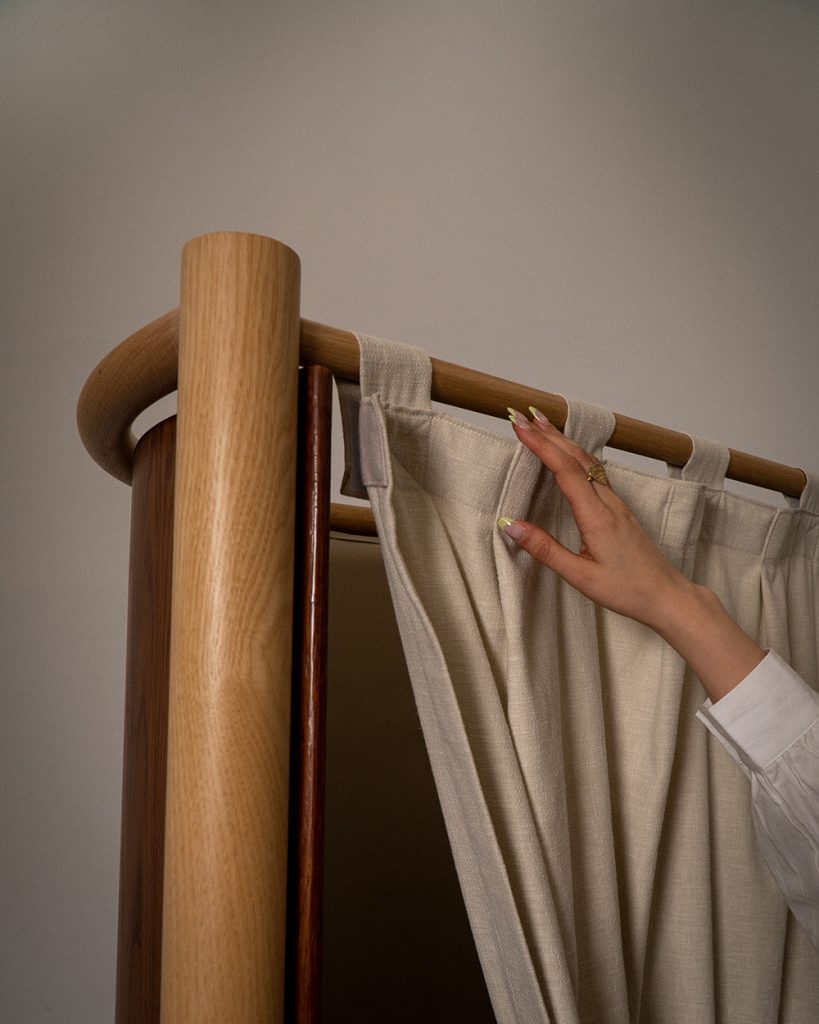
Photography by Wathek Allal
The Latest
Textures That Transform
Aura Living’s AW24 collection showcases the elegance of contrast and harmony
Form Meets Function
Laufen prioritises design, functionality and sustainability in its latest collections
Preserving Culture, Inspiring Creativity
Discover the Legacy of a Saudi Art Space: Prince Faisal bin Fahd Arts Hall explores the Hall’s enduring influence on the cultural fabric of Saudi Arabia
Channelling the Dada Spirit
Free-spirited and creative, The Home Hotel in Zurich injects a sense of whimsy into a former paper factory
id Most Wanted- January 2025
Falaj Collection by Aljoud Lootah Design
Things to Covet in January
identity selects warm-toned furniture pieces and objets that align with Pantone’s colour of the year
Shaping the Future of Workspaces by MillerKnoll
Stacy Stewart, Regional Director Middle East & Africa of MillerKnoll discusses the future and evolution of design in workspaces with identity.
Shaping Urban Transformation
Gensler’s Design Forecast Report 2025 identifies the top global design trends that will impact the real estate and built environment this year
Unveiling Attainable Luxury
Kamdar Developments has launched 105 Residences, a new high-end development in Jumeirah Village Circle.
The Muse
Located in the heart of Jumeirah Garden City, formerly known as ‘New Satwa’, The Muse adds to the urban fabric of the area
Cultural Immersion Meets Refined Luxury
The Chedi Hegra opens its doors in AlUla’s UNESCO World Heritage Site
Redefining Coastal Luxury
Sunshine Bay on Al Marjan island combines seaside views, exceptional design, and world-class amenities to create a unique waterfront haven
















